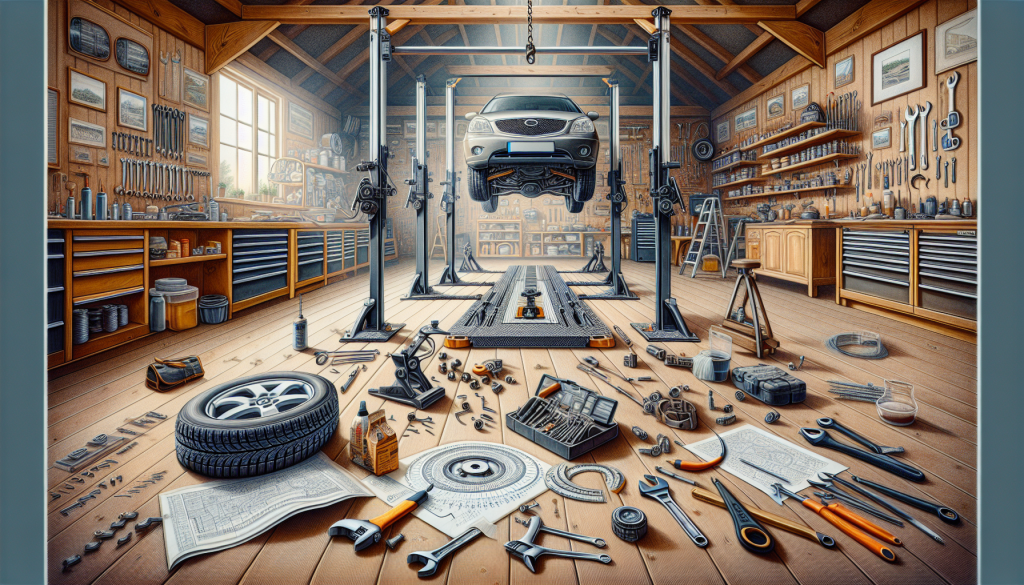Why Suspension Alignment Matters
Keeping your car’s suspension aligned isn’t just a good idea—it’s a must for smooth rides and safe travels. Let’s break down why getting your suspension in check is so important.
Spotting Wheel Alignment Issues
Wheel alignment can go haywire for all sorts of reasons—hitting potholes, bumping curbs, or just plain old wear and tear. When your wheels are out of whack, you’ll notice uneven tire wear, wobbly handling, and even worse gas mileage. Catching these problems early can save you a lot of headaches (and money).
Here’s what to watch out for:
- Tires wearing unevenly
- Steering wheel not centered
- Car pulling to one side
- Steering wheel shaking
Need more info? Check out our page on wheel alignment problems.
Fixing Wheel Alignment Issues
Fixing alignment issues means tweaking the angles of your wheels to match what the manufacturer intended. This involves adjusting the camber, caster, and toe settings. Regular check-ups and timely fixes can keep your car running smoothly for years.
| Problem | Fix |
|---|---|
| Uneven tire wear | Adjust camber and toe |
| Steering wheel off-center | Realign steering |
| Car pulls to one side | Adjust caster |
| Steering wheel shakes | Balance tires and align wheels |
For a detailed guide, see our suspension alignment process.
Why Regular Suspension Checks Are a Game-Changer
Getting your suspension checked regularly can make a world of difference. It helps you catch issues early, keeps your car safe, and ensures it runs like a dream. Plus, it can make your tires last longer and improve your gas mileage.
Here’s why you should make it a habit:
- Boosts safety
- Extends tire life
- Saves on fuel
- Improves handling
Find out more about the benefits of suspension alignment.
Using the Right Tools
Using high-precision tools for suspension alignment is like having a secret weapon. These tools measure the exact angles of camber, caster, and toe, making sure your adjustments are spot-on. They’re especially handy if you’re a DIY enthusiast.
| Tool | What It Does |
|---|---|
| Alignment gauge | Measures wheel angles |
| Camber gauge | Measures camber angle |
| Toe plates | Measures toe angle |
| Caster gauge | Measures caster angle |
For a rundown on the tools you’ll need, visit our page on suspension alignment tools.
Understanding why suspension alignment matters and using the right tools can seriously boost your car’s performance and safety. Regular check-ups and timely tweaks are your best bet for keeping your ride in top shape and avoiding expensive repairs.
DIY Suspension Alignment Techniques
Got wheel alignment issues? Don’t sweat it. Let’s dive into some DIY suspension alignment tricks that’ll get your ride back on track. We’ll cover the basics like adjusting camber, caster, and toe, and even how to test your work on the road.
Adjusting Camber, Caster, and Toe
Getting your wheels aligned means tweaking three main angles: camber, caster, and toe. Knowing how to adjust these is key for a smooth ride.
Camber: This is the tilt of your tire when you look at it from the front. If the top of the tire leans out, that’s positive camber. If it leans in, that’s negative camber. Need a step-by-step? Check out adjusting camber in suspension.
Caster: This is the angle of the steering pivot when you look at your car from the side. Positive caster tilts the steering axis toward you, while negative caster tilts it away. More details at adjusting caster in suspension.
Toe: This is about the direction your tires point relative to the car’s centerline. Toe-in means the front of the tires point inward, and toe-out means they point outward. Learn more at adjusting toe in suspension.
| Adjustment Type | Description | Ideal Range |
|---|---|---|
| Camber | Tilt of the tire | -0.5° to 0.5° |
| Caster | Angle of steering pivot | 3° to 5° |
| Toe | Direction of tire point | 0° to 0.1° |
Taking a Road Test After Alignment
Once you’ve made your adjustments, it’s time for a road test. Pay attention to how your car handles, how the steering feels, and if it pulls to one side. This helps confirm that your tweaks have made things better. For more tips, see our suspension alignment process.
Checking Alignment with New Tires
Got new tires? Make sure to check your alignment. Proper alignment makes your tires last longer and keeps your car handling well. Misalignment can cause uneven tire wear and make driving unsafe. For a full guide, see suspension alignment tips.
Watching Tire Wear Patterns
Keep an eye on how your tires wear. Uneven wear on the edges could mean camber issues, while feathering or scalloping might point to toe problems. Spotting these early can save you a lot of trouble. For more info, visit monitoring tire wear patterns.
Fixing Suspension Issues for Better Driving
Fixing suspension problems not only makes your car drive better but also keeps you safe and extends the life of your tires and suspension parts. Proper alignment ensures your car handles predictably and responds well to steering. For common fixes, check out solutions for suspension issues.
By following these DIY suspension alignment tips, you can tackle alignment problems and keep your car running smoothly. If you need a pro, consider visiting a suspension alignment shop or searching for suspension alignment near me.



